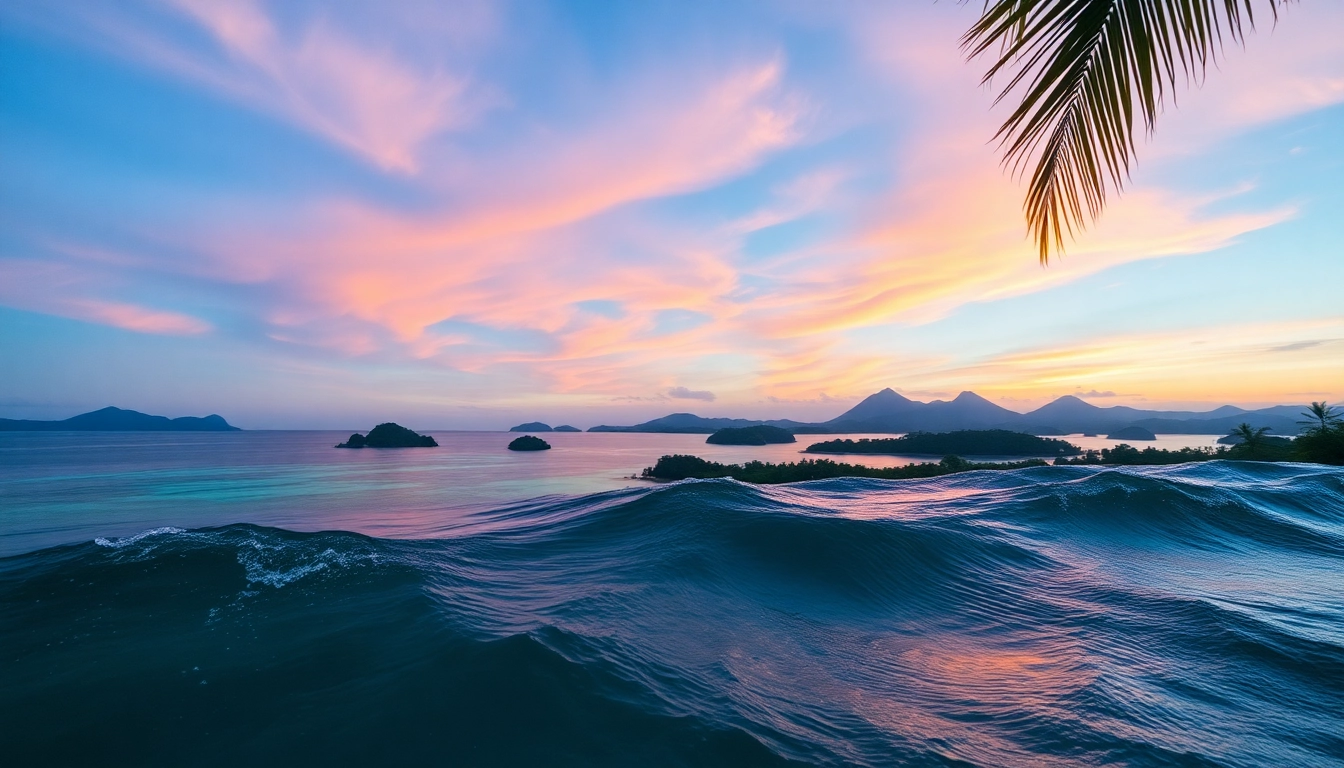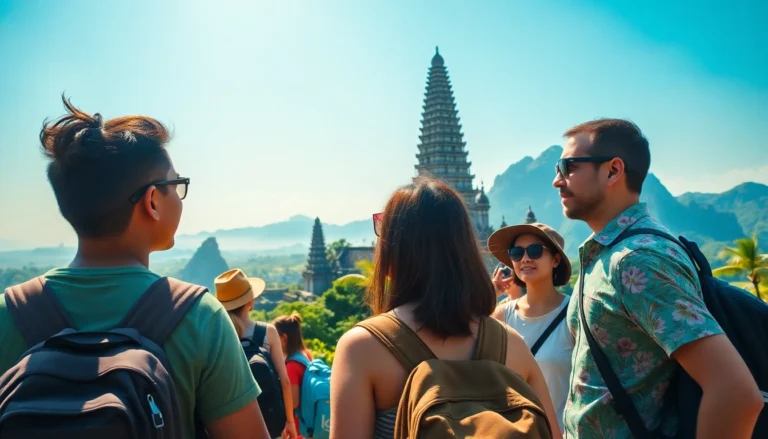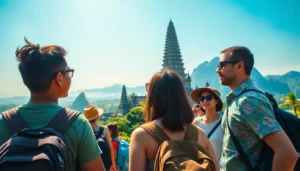Introduction to Lombok’s Unique Charm
Nestled in the heart of the Indonesian archipelago, Lombok is a captivating island renowned for its breathtaking natural landscapes, vibrant cultural heritage, and diverse adventure opportunities. As part of the Lesser Sunda Islands, Lombok offers a distinct blend of tranquil beaches, towering volcanoes, and rich Sasak traditions that create an irresistible allure for travelers seeking authentic experiences. With an estimated population of over four million residents, Lombok’s growing tourism infrastructure and compelling attractions have made it a must-visit destination in Southeast Asia. Whether you’re passionate about exploring pristine beaches, conquering volcanic peaks, or immersing yourself in local customs, Lombok promises a memorable journey filled with discovery and awe.
Geographical Overview of Lombok
Lombok is located east of Bali, separated by the Lombok Strait, and spans approximately 4,700 square kilometers. The island’s geography is characterized by lush rainforests, terraced rice fields, rugged highlands, and long stretches of white sandy beaches. Dominating the landscape is Mount Rinjani, Indonesia’s second-highest volcano, standing at 3,726 meters above sea level. This active volcano forms a central feature of the island, offering both a majestic sight and a popular trekking challenge for adventure enthusiasts.
The island is divided into several regencies, including Lombok Barat (West Lombok), Lombok Tengah (Central Lombok), Lombok Utara (North Lombok), and Lombok Timur (East Lombok). Each region boasts unique landscapes and cultural nuances, from the serene coastal villages to the vibrant markets of Mataram city. The island’s tropical climate ensures warm temperatures year-round, with the dry season (May to September) being optimal for outdoor activities and exploring its diverse environments.
Cultural Heritage and Local Traditions
At the core of Lombok’s identity lies its rich cultural tapestry, predominantly shaped by the Sasak people—the island’s indigenous inhabitants. Their traditions, language, crafts, and rituals continue to thrive amidst modern development, offering travelers an authentic glimpse into local life. The Sasak culture is renowned for elaborate ceremonies, vibrant dance performances, and intricate weaving techniques that produce stunning textiles like songket and ikat fabrics.
One of the most prominent cultural events is the Bau Nyale festival, celebrated annually in the village of Sekaroh, where locals gather to hunt for sea worms called Nyale, believed to be the reincarnation of Princess Mandalika. This festival embodies community spirit and reverence for ancestral customs, providing visitors with a unique cultural experience.
Traditional villages such as Sade and Rambitan preserve Sasak architectural styles featuring stone walls, thatched roofs, and communal layouts. Visitors are encouraged to participate in local handicraft making, listen to storytelling, and witness traditional music performances, fostering a deeper understanding and respect for Lombok’s heritage.
Why Lombok is a Must-Visit Destination
Lombok’s diverse attractions and authentic local experiences set it apart from its more commercialized neighbor, Bali. Its pristine beaches, towering volcanoes, and untouched natural landscapes appeal to eco-tourists and adventure seekers alike. The island balances natural wonder with cultural richness, providing a holistic travel experience that is both exhilarating and immersive. Additionally, Lombok’s growing accessibility—with direct flights from major cities and well-developed infrastructure—makes it an increasingly popular choice for travelers seeking a less crowded yet equally stunning Indonesian paradise.
Beyond the scenic beauty, Lombok offers affordability and hospitality, making it accessible for a wide range of visitors. Its emphasis on sustainable tourism and community-based initiatives ensures that tourism benefits local communities, preserving the island’s ecological and cultural fabric for generations to come. These qualities collectively affirm Lombok’s status as a top-tier destination for travelers craving adventure, relaxation, and cultural discovery.
Must-See Destinations on Lombok
Gili Islands: Paradise for Relaxation and Diving
The Gili Islands—Gili Trawangan, Gili Air, and Gili Meno—are world-famous for their pristine white beaches, crystal-clear waters, and vibrant marine life. Located just off the northwest coast of Lombok, these small islands have become hotspots for snorkeling and diving aficionados. Gili Trawangan is the largest and most lively, with a bustling nightlife, bars, and resorts. Gili Air offers a more laid-back vibe with intimate beachfront bungalows, while Gili Meno provides tranquility and untouched natural beauty, ideal for romantic getaways or family adventures.
The coral reefs surrounding the Gilis are part of a protected marine park, making them perfect for exploring vibrant underwater ecosystems teeming with colorful fish, sea turtles, and even reef sharks. Many dive centers on the islands offer certification courses, night dives, and eco-conscious tours, enabling visitors to experience unparalleled marine biodiversity sustainably.
Mount Rinjani: Conquering Indonesia’s Second Highest Volcano
For adventure enthusiasts, Mount Rinjani presents an epic challenge that combines physical endurance with awe-inspiring scenery. As Indonesia’s second highest volcano, Rinjani’s crater lake, Segara Anak, is a stunning turquoise water body nestled within the caldera. Trekking to Rinjani’s summit at 3,726 meters offers panoramic vistas of surrounding islands and abundant volcanic landscapes.
Multiple trekking routes cater to different skill levels, from two-day hikes to extensive five-day expeditions. Local guides and ranger services provide safety and rich insights into the volcano’s geology and cultural significance. The journey not only fosters personal achievement but also contributes to eco-tourism and conservation efforts in the region. Proper preparation, such as acclimatization and choosing experienced guides, is crucial for a successful ascent.
Beautiful Beaches and Waterfalls for Nature Lovers
Lombok’s coastline boasts innumerable beaches with majestic surf, calm lagoons, and stunning tide pools. Pantai Tanjung Aan and Pantai Selong Belanak are favorites for their consistent surf, soft white sands, and scenic surroundings, attracting surfers, beach walkers, and families alike. The island also features tranquil spots like Mawun Beach, renowned for its crystal-clear waters and powdery sand.
Beyond beaches, Lombok’s waterfalls—Sendang Gile and Tiu Kelep in Senaru—offer refreshing escapes into lush jungle landscapes. These cascading waterfalls are accessible via scenic hiking trails, and their cool waters are perfect for swimming after a trek. The region’s biodiversity is further showcased through eco-tours that highlight plant and animal life, contributing to the sustainable preservation of these natural sites.
Experience the Rich Culture and Local Life
Traditional Sasak Villages and Festivals
Immersing in Lombok’s cultural soul means visiting its traditional villages, where Sasak craftsmanship and customs endure amidst modern influences. Sade and Rambitan villages are exemplary, featuring traditional homes built with alang-alang thatch and ornate carvings. Visitors can witness locals weaving ikat textiles, making pottery, and preparing ceremonial offerings.
Festivals like Bau Nyale not only showcase cultural rituals but also serve as social gatherings that strengthen community bonds. Participating in these events provides deeper insights into Sasak spiritual beliefs, societal values, and artistic expressions, fostering authentic connection and appreciation for Lombok’s indigenous identity.
Local Cuisine and Handicrafts
Lombok’s culinary landscape is as diverse as its geography. Traditional dishes such as ayam taliwang (spicy grilled chicken), plecing kangkung (water spinach topped with spicy sambal), and jagung bose (corn porridge) showcase bold flavors rooted in local ingredients. Street food stalls and local warungs serve these dishes at affordable prices, offering an immersive taste of Sasak flavors.
The island is also a hub for handcrafted souvenirs—unique woven textiles, wood carvings, and silver jewelry. Artisans often use traditional techniques passed down through generations, ensuring the preservation of local craftsmanship. Visiting markets and craft centers supports sustainable livelihoods while adding authentic pieces to your collection.
Community-Based Tourism Initiatives
Lombok’s approach to tourism emphasizes community involvement and sustainable development. Several villages operate homestays, cultural tours, and eco-tours led by local residents, ensuring that tourism revenues benefit the community directly. These initiatives promote environmental conservation, cultural preservation, and economic empowerment.
Notable programs include eco-lodges in rural areas, participatory craft workshops, and guided village walks that showcase daily life and ancestral practices. Engaging with community-based tourism enriches visitors’ experiences, fosters intercultural understanding, and helps preserve Lombok’s unique traditions and ecosystems.
Adventure and Outdoor Activities in Lombok
Surfing, Snorkeling, and Diving Spots
Lombok is a premier surfing destination, attracting wave riders from around the globe. Spots like Kuta Beach, Gerupuk, and Ekas Bay offer a variety of breaks suitable for all skill levels. The island’s warm waters and consistent swells make it ideal for both beginners and advanced surfers.
Snorkelers and divers explore vibrant coral reefs around the Gili Islands, as well as secluded spots along Lombok’s coastline. Underwater life includes reef sharks, manta rays, and an array of tropical fish. Many operators provide equipment rentals, guided excursions, and eco-friendly tours to ensure sustainable exploration of marine environments.
Hiking and Trekking Trails
Beyond Rinjani, Lombok offers numerous trekking opportunities through forests, rice terraces, and volcanic landscapes. Trails in the Sekupang and Senaru regions lead trekkers to waterfalls, viewpoints, and traditional villages. Guided hikes provide insights into local flora, fauna, and cultural sites, enriching the outdoor experience.
For less strenuous adventures, nearby hills and coastal paths cater to casual hikers and nature lovers seeking scenic vistas and tranquility. Proper gear, hydration, and respectful engagement with local communities are key to successful trekking adventures on the island.
Wildlife and Eco-Tourism Opportunities
Lombok’s diverse ecosystems host a variety of wildlife, from jungle birds and primates to marine species. Lombok Wildlife Park and conservation projects offer educational interactions, promoting awareness and protection efforts.
Eco-tourism initiatives focus on mangrove preservation, coral reef restoration, and sustainable farming practices. Visitors can participate in beach clean-ups, tree planting, and community-led conservation projects, transforming tourism into a force for environmental stewardship.
Planning Your Trip to Lombok
Best Seasons and Travel Tips
The ideal time to visit Lombok is during the dry season, from May to September, when the weather is sunny, and sea conditions are favorable for outdoor activities. Avoid the rainy season (November to March), which can hinder travel plans and outdoor explorations due to heavy rains and rough seas.
Travel tips include booking accommodations in advance, especially during peak seasons, and learning basic Indonesian phrases to enhance cultural interactions. Currency exchange services and local SIM cards are readily available, ensuring a smooth trip experience.
Accommodation and Transportation Options
Lombok offers a range of accommodations, from luxury resorts and chic villas to budget hostels and homestays. Popular areas like Senggigi and Gili Trawangan provide vibrant nightlife and tourist amenities, whereas rural villages offer authentic homestay experiences.
Transportation within Lombok includes rental scooters, private drivers, and local buses. For longer distances or to access remote sites, hiring a driver with a private vehicle is recommended for comfort and convenience. Domestic flights connect Lombok to Bali, Jakarta, and other key Indonesian hubs, streamlining travel planning.
Exclusive Local Experiences and Tours
Enhance your trip with curated experiences such as sunrise treks on Rinjani, traditional Sasak cooking classes, or village homestays that integrate cultural immersion. Certified tour operators offer eco-friendly and responsible tours that prioritize community benefit and environmental conservation.
Additionally, customized private tours can be designed to suit specific interests—whether wildlife photography, spiritual retreats, or wellness programs—providing a tailored and memorable Lombok adventure.




